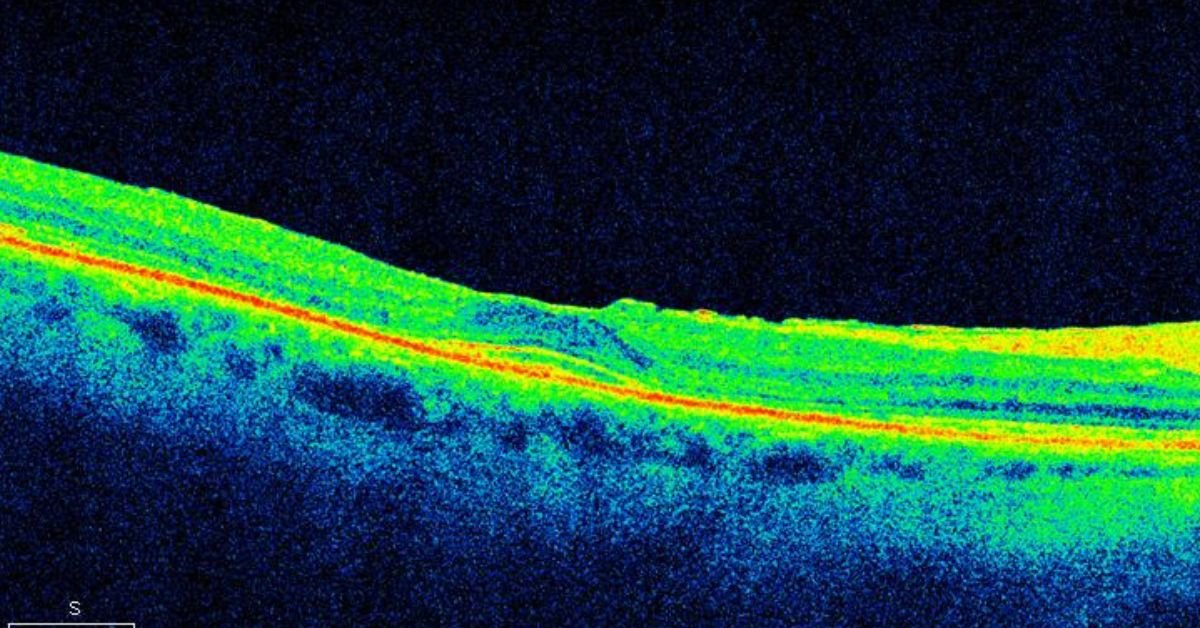
3D OCT Retinal Imaging Scans
Let’s Take a Deeper Look Into Your Eye Health
Our advanced 3D OCT Retinal Imaging Scans help us diagnose, monitor, and treat a range of eye conditions, including glaucoma, macular degeneration, diabetic retinopathy, and retinal disease.
What is 3D OCT Imaging?
OCT stands for Optical Coherence Tomography. It's a non-invasive test that allows your optometrist to take high-resolution scans of your retina, optic nerve, cornea, and iris. These scans help your eye doctor analyze your eye's health and can produce a 3D image showing you the topography of the inside of your eye.
Is 3D OCT Imaging Safe?
Absolutely. Although the images produced by an OCT look like X-rays, they are not. OCT imaging is safe and can be routinely performed on patients of any age. The OCT images are produced using eye-safe infrared light, which causes no damage to the imaged tissue.
This is important as some eye conditions, such as age-related macular degeneration and glaucoma, may require multiple scans to be performed annually.
Why Is OCT Imaging Required?
OCT imaging allows your optometrist to see through your retina and evaluate the deep layers of your eyes that are otherwise invisible during a standard eye exam.
OCT imaging is a game changer in the eye care industry. This test provides greater insight into many eye diseases, such as: glaucoma, age-related macular degeneration, retinal disorders, diabetic retinopathy, and numerous other eye conditions.
With a cross-section of a retina being no more than 0.5mm thick, our high-definition Nidek 3000 OCT can scan down to 4 microns or 0.004mm. This high-resolution scan provides our optometrists with a detailed view of your eye structures and better insight into your eye health. When combined with a thorough clinical examination and other tests, it can help with the early detection of some eye diseases.
This instrument is the gold standard for monitoring the retinal health of patients on medications such as Plaquenil (Hydroxychloroquine), a common drug used to treat malaria and arthritis. In addition, for patients with a family history of glaucoma, OCT imaging is used to detect early signs or subtle changes in optic nerve health. This results in earlier treatment options or peace of mind knowing things are stable.
Does Alberta Health Care
cover 3D OCT Imaging?
Your optometrist may recommend retinal imaging if you are considered “at-risk” or have pre-existing health conditions affecting your eye health. They may also recommend retinal imaging if your vision worsens with no apparent cause to identify the issue. If your optometrist deems it medically necessary to diagnose, document, or monitor an eye condition, OCT imaging will be covered by Alberta Health Care. However, there are a limited number of scans your optometrist can run, and any additional scans will need to be paid privately.
FAQ’s about OCT
-
Not at all. OCT scans are fast and painless. In fact, we routinely perform them on kids.
-
Not yet, but it can be combined with other tests to help build a case for or against glaucoma. It’s one of the tools that your optometrist may use to help them in making a clinical decision, but it’s simply that, a tool.


